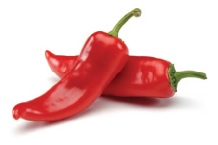Exercise your right to take a culinary stay-cation this summer.
Overseas travel may continue to be a challenge in the rush to get everyone vaccinated. However, you can still enjoy a taste of a country’s cultural identity through its national dish. Whether picking from a dine-in or takeout menu, or shopping in one of New Jersey’s now-ubiquitous international markets, feel perfectly free to cobble together your own culinary itinerary. We’ve picked out six of the spiciest signature dishes—three you can find easily, and three that may just turn out to be your gateway to adventure.
 Kimchi
Kimchi
The “five elements” theory of Korean culture is embodied in kimchi, fermented cabbage that combines sweet, sour, salty, bitter and knock-your-socks-off spicy. It’s an ancient staple that has crossed over into American kitchens and restaurants in many creative forms—in main dishes, stews, side dishes and condiments—and its availability is no longer limited to Asian markets. In South Korea, kimchi is served with almost every meal, including breakfast.
 Mole
Mole
Mole (pronounced Mo-lay) is Mexico’s curry, kind of—there are countless versions, with limitless complexity. Mole pablano is the most common served in the U.S. What they all have in common is bittersweet dark chocolate, which is flavored with chilies, garlic, onions and a dozen or more spices. The caffeine in the chocolate releases endorphins, while the capsicum in the peppers provides a shot of adrenaline. It’s a rush. Mole is often part of the most expensive dishes on Mexican restaurant menus for a reason. Expect spicy not sweet, if you order it and be aware that it often contains ground nuts.
 Pad Thai
Pad Thai
The signature dish of Thailand has rocketed to prominence over the last 25 years and now ranks among the most popular foods on the planet. And yet pad Thai is less than 100 years old, the result of a competition in Siam during the 1930s to create a national dish. It’s made with stir-fried rice noodles, fish sauce, roasted peanuts, tamarind, scrambled eggs and just about any combination of meat and vegetables. Simple as pad Thai sounds, in the U.S., every restaurant seems to have its own slightly different take—so if you like spicy, it’s always helpful to let your server know. The translation of pad, if you’re interested, is “fried” (most people think its “noodles”).
 Ema Datshi
Ema Datshi
So on your next visit to your friendly neighborhood Bhutanese bistro, make sure to order Bhutan’s signature dish, an intriguing combination of tear-inducing chilies and soft cheese in a tomato-and-onion stew. Actually, there are quite a number of Bhutanese immigrants who have made their home in the U.S.—between 100,000 and 200,000, in fact—and many have settled in the northeast, from Pennsylvania up through Vermont and New Hampshire. Many are refugees who traveled through Nepal to get here, and are thus classified as Nepalese. Your best bet to locate this dish is in a Himalayan restaurant, of which there are more than a few in the tri-state area.
 Machboos
Machboos
The Kingdom of Bahrain achieved independence in 1971, so if you don’t know exactly where it is, you may be giving away your age. For the record, Bahrain is an island nation in the Persian Gulf, connected to the Arabian Peninsula by a 25-mile bridge. Its national dish—often consumed with family members on Fridays—Machboos, is a spicy chicken meal strongly influenced by Persian and Indian cuisine. It is popular throughout the Middle East and is actually fairly easy to make at home. In addition to chilies, classic ingredients include ginger, coriander, cardamom, cinnamon and nutmeg. So yeah, it’s super-aromatic.
 Pepperpot
Pepperpot
If you’re partial to Caribbean peppers, the national stew of Guyana is one you ought to try. Its signature ingredient is cassareep, a dark, syrupy extract from the cassava root that probably dates back to Guyana’s indigenous inhabitants, who used it as a preservative. The meat is whatever’s available, but typically beef, goat or oxtail. Roughly a quarter-million Guyanese-Americans live in the US, with most residing in New York’s  outer boroughs (as well as northern New Jersey), so finding a good pepperpot isn’t as hard as you might think.
outer boroughs (as well as northern New Jersey), so finding a good pepperpot isn’t as hard as you might think.





